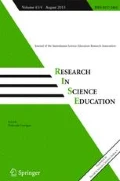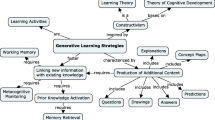Abstract
While Physics Education Research has a rich tradition of problem-solving scholarship, most of the work has focused on more traditional, well-defined problems. Less work has been done with ill-structured problems, problems that are better aligned with the engineering and design-based scenarios promoted by the Next Generation Science Standards. This study explored the relationship between physics content knowledge and ill-structured problem solving for two groups of high school students with different levels of content knowledge. Both groups of students completed an ill-structured problem set, using a talk-aloud procedure to narrate their thought process as they worked. Analysis of the data focused on identifying students’ solution pathways, as well as the obstacles that prevented them from reaching “reasonable” solutions. Students with more content knowledge were more successful reaching reasonable solutions for each of the problems, experiencing fewer obstacles. These students also employed a greater variety of solution pathways than those with less content knowledge. Results suggest that a student’s solution pathway choice may depend on how she perceives the problem.
Similar content being viewed by others
Notes
Some problem-solving researchers might refer to this question as an exercise instead of a problem, given the question’s “plug and chug” nature.
References
Bond, C. E., Philo, C., & Shipton, Z. K. (2011). When there isn’t a right answer: interpretation and reasoning, key skills for twenty-first century geoscience. International Journal of Science Education, 33(5), 629–652.
Bransford, J. D., & Stein, B. S. (1984). The ideal problem solver: a guide for improving thinking, learning, and creativity. New York: Freeman.
Caballero, M. D., Greco, E. F., Murray, E. R., Bujak, K. R., Marr, M. J., Catrambone, R., & Schatz, M. F. (2012). Comparing large lecture mechanics curricula using the force concept inventory: a five thousand student study. American Journal of Physics, 80, 638.
Chi, M. T., & Glaser, R. (1985). Problem solving ability. In R. J. Sternberg (Ed.), Human abilities: an information processing approach (pp. 227–250). New York: W.H. Freeman and Company.
Chi, M., Feltovich, P., & Glaser, R. (1981). Categorization and representation of physics problems by experts and novices. Cognitive Science, 5(2), 121–152.
College Board (2006). Advanced Placement Report to the Nation. New York, NY.
Ericsson, K. A., & Simon, H. A. (1980). Verbal reports as data. Psychological Review, 87(3), 215–251.
Fortus, D. (2009). The importance of learning to make assumptions. Science Education, 93(1), 86–108.
Given, L. (2008). Open Coding. In The sage encyclopedia of qualitative research methods (pp. 582–583). Thousand Oaks, CA: Sage.
Hestenes, D., Wells, M., & Swackhamer, G. (1992). Force concept inventory. Physics Teacher, 30, 141–158.
Jonassen, D. H. (1997). Instructional design models for well-structured and ill-structured problem-solving learning outcomes. Educational Technology Research and Development, 45(1), 65–94.
Kitchner, K. S. (1983). Cognition, metacognition, and epistemic cognition. Human Development, 26(4), 222–232.
Kuhn, D. (2000). Metacognitive development. Current Directions in Psychological Science, 9(5), 178–181.
Larkin, J., McDermott, J., Simon, D., & Simon, H. (1980). Expert and novice performance in solving physics problems. Science, 208(4450), 1335–1342.
Lynch, S., & Bryan, L. (2014). Supporting the implementation of the Next Generation Science Standards (NGSS) through research: introduction to NARST position papers. Retrieved from https://narst.org/ngsspapers/
Milbourne, J., & Wiebe, E. N. (2013). How do high school students approach ill-defined physics problems? Presented at the NARST Annual Meeting, Rio Del Mar, PR.
National Research Council (2012). A framework for K-12 science education: practices, crosscutting concepts, and core ideas. Washington, DC: National Academies Press.
NGSS Lead States (2013). Next Generation Science Standards: for states, by states. Washington, DC: The National Academies Press.
Overton, T., Potter, N., & Leng, C. (2013). A study of approaches to solving open-ended problems in chemistry. Chemistry Education Research and Practice, 14(4), 468–475.
Palmer, D. (1997). The effect of context on students’ reasoning about forces. International Journal of Science Education, 19(6), 681–696.
Reitman, W. (1965). Cognition and thought. New York: Wiley.
Sarsfield, E. (2014). Differences between novices’ and experts’ solving ill-structured problems. Public Health Nursing, 31(5), 444–453.
Schraw, G., Dunkle, M. E., & Bendixen, L. D. (1995). Cognitive processes in well-defined and ill-defined problem-solving. Applied Cognitive Psychology, 9(6), 523–538.
Schraw, G., & Moshman, D. (1995). Metacognitive theories. Educational Psychology Review, 7(4), 351–371.
Shin, N., Jonassen, D. H., & McGee, S. (2003). Predictors of well-structured and ill-structured problem solving in an astronomy simulation. Journal of Research in Science Teaching, 40(1), 6–33.
Simon, H. A. (1973). The structure of ill-structured problems. Artificial Intelligence, 4, 181–201.
Singh, C. (2002). When physical intuition fails. American Journal of Physics, 70(11), 1103–1109.
Sinnott, J. D. (1989). A model for solution of ill-structured problems: implications for everyday and abstract problem solving. In J. D. Sinnott (Ed.), Everyday problem solving: theory and applications (pp. 72–99). New York: Praeger.
Strauss, A., & Corbin, J. (1998). Basics of qualitative research: techniques and procedures for developing grounded theory. Thousand Oaks, CA: Sage.
Voss, J. F., & Post, T. A. (1988). On the solving of ill-structured problems. In M. T. H. Chi, R. Glaser, & M. J. Farr (Eds.), The nature of expertise. Hillsdale, NJ: Lawrence Erlbaum Associates.
Author information
Authors and Affiliations
Corresponding author
Ethics declarations
In submitting the paper “The Role of Content Knowledge in Ill-Structured Problem Solving for High School Physics Students,” there are no conflicts of interests involved, no financial support was involved, the listed authors are the sole authors of this paper, and there are no other ethical issues. Subjects of this research were consented and research methodologies utilized approved by the host institution’s Institutional Review Board.
Conflict of Interest
The authors declare that they have no conflict of interest.
Human Animal Rights
Research with human participants was conducted in this reported research and approved by our overseeing Institutional Review Board.
Informed Consent
All human participants in this study provided informed consent.
Rights and permissions
About this article
Cite this article
Milbourne, J., Wiebe, E. The Role of Content Knowledge in Ill-Structured Problem Solving for High School Physics Students. Res Sci Educ 48, 165–179 (2018). https://doi.org/10.1007/s11165-016-9564-4
Published:
Issue Date:
DOI: https://doi.org/10.1007/s11165-016-9564-4




